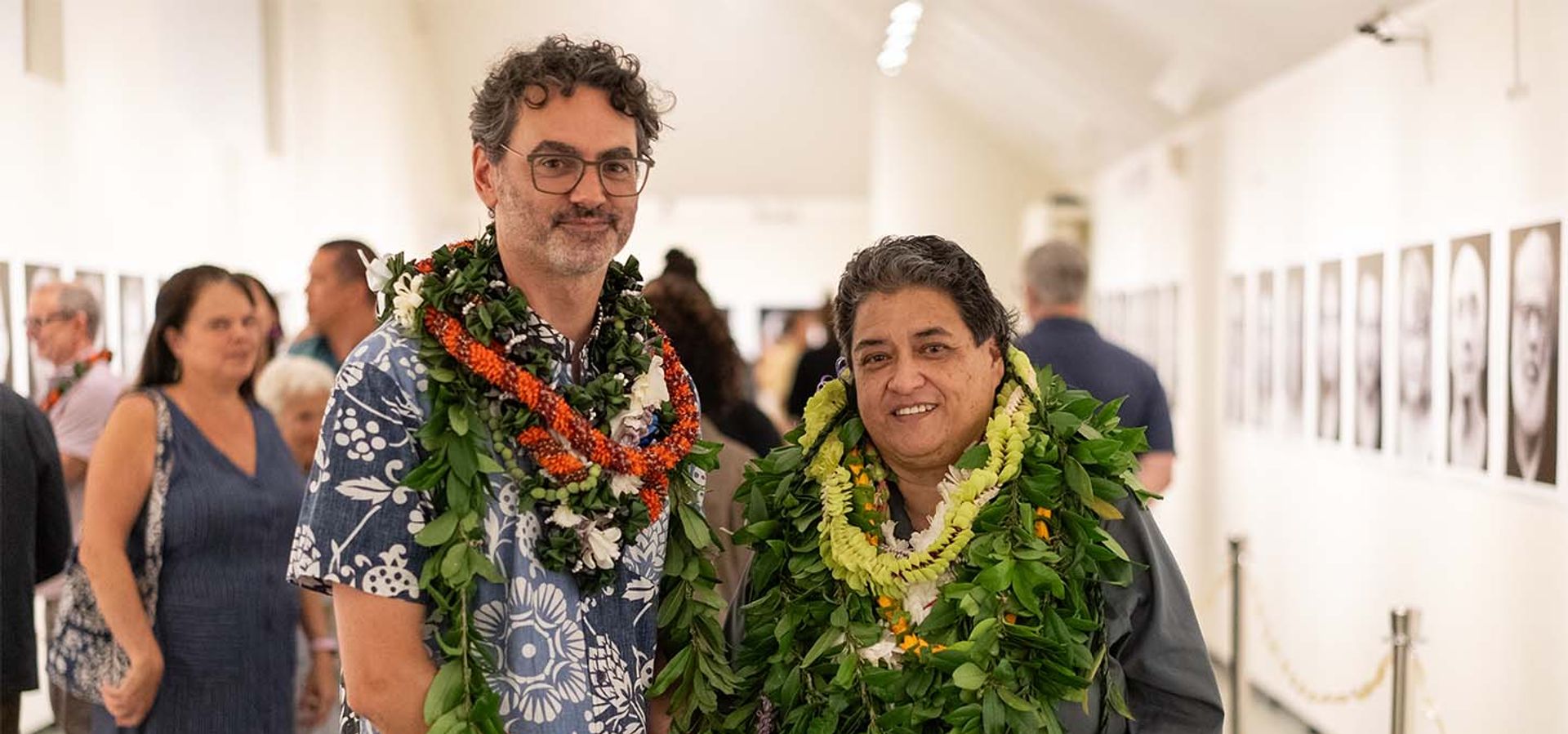Gut instinct: Kapulani Landgraf on her na‘au chains in ‘Au‘a
Now on view in Gallery 12 is Kapulani Landgraf: ‘Au‘a. This isn’t the first time this resonant work of 108 photographs has been at the museum—you might remember it from the 2019 Honolulu Biennial (now Triennial), when it was installed at HoMA with the images printed on aluminum panels.
Following the exhibition, the museum acquired a different edition of ‘Au‘a, and the current installation marks its public debut. This time the photographs are on paper and unframed. So to help protect the works, Senior Curator of Contemporary and Modern Art Tyler Cann asked Landgraf to come up with a creative concept for a stanchion barrier.
The result is dozens of feet of translucent “aha” (sennit, cordage, intestines of animals), made of chains of nylon zip ties passed through na‘au, or pig intestines, with the ties creating an eye shape, a potent symbol that appears often in Landgraf’s work. And she made it all by hand without assistance.
“My first idea was na‘au,” says Landgraf, who has worked with the organic material before, but not with this type of insert. She originally wanted to work with stainless steel or aluminum ties, but the steel, when pushed through a length of intestine, “the eye would close,” she explains. And the aluminum quickly corroded.
One day, while she was in a meeting with Cann at the museum, Alejandra Rojas Silva, the Works on Paper, Photography & New Media Fellow, stopped in and saw Landgraf’s prototype made with zip ties. Rojas Silva picked it up and remarked that zip ties are often used by law enforcement in place of handcuffs. It reminded the artist that when she was on Mauna Kea to kapu aloha the Thirty-Meter Telescope, “on the first day, the police had all these bunches of white cable ties. That made me decide that was what I was going to use,” says Landgraf.

Processing the intestines was a labor-intensive process. Landgraf bought the na‘au from a meat market, then to clean it, would fasten it to a faucet and fill it with water like a balloon. When the water was released, the length of intestine was transparent. “But sometimes there would be flaws, or I would have to fix tears. Everything depends on the texture of the gut.”
After carefully inserting the zip tie chains into the na‘au, she then let the strands dry, effectively shrink wrapping the ties in gut. “Every Saturday I would do it in the morning, and it would dry by the afternoon as long as it didn’t rain. Then I coated it in polyurethane because the moisture in the air would make it soft. I know all about gut,” she says with a chuckle.
Landgraf points out that besides looking like an eye, each link also echoes the shape of a fish, which gives the work its title. Like many words in ‘Ōlelo Hawai‘i, the term ‘au‘a is layered with meaning. One of its definitions is “to withhold.” It also refers to an ‘ōpelu (mackerel scad) that stands out from the rest of its school. When a fisherman spocks an ‘au‘a, he knows a school is nearby, but that this particular fish is uncatchable.
In addition, the na‘au chain can look like a DNA helix, giving even more meaning to the names of kūpuna handwritten on each link. People who sat for Landgrafʻs portraits shared names with her to include in the installation. She also added other names, such as those of the koa aloha ‘āinawarriors who defended Queen Lili‘uokalani during the 1895 counterrevolution.
“It allows our kūpuna to live,” says Kā‘ōhua Lucas, whose portrait is part of ‘Au‘a. “To be able to see our ˚kūpuna names here is powerful.”
Posted by Lesa Griffith on February 7 2024


